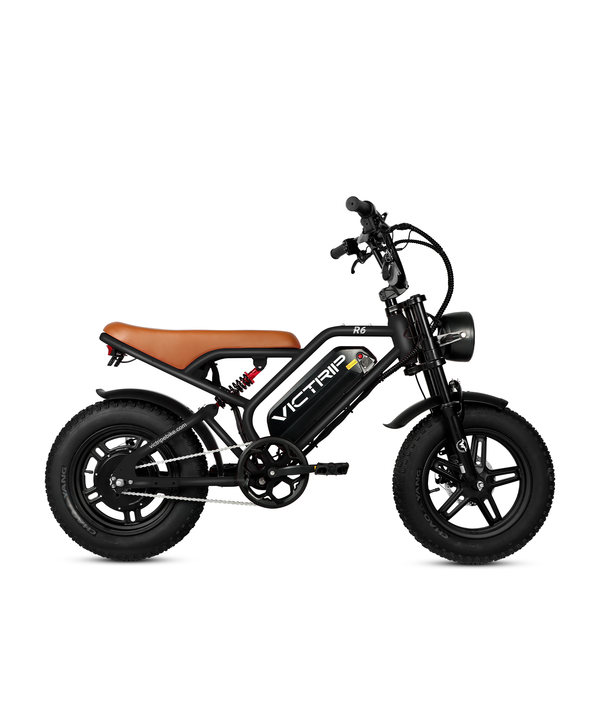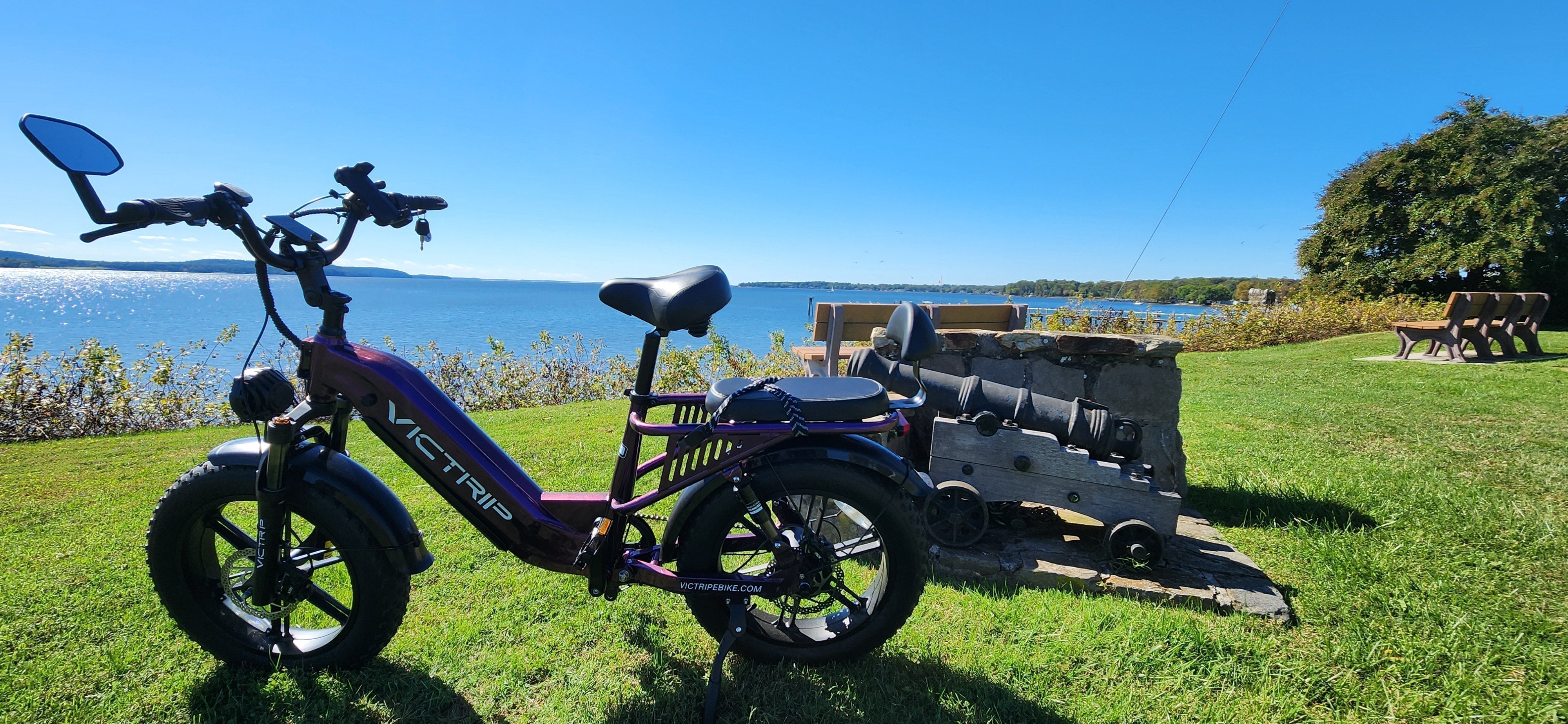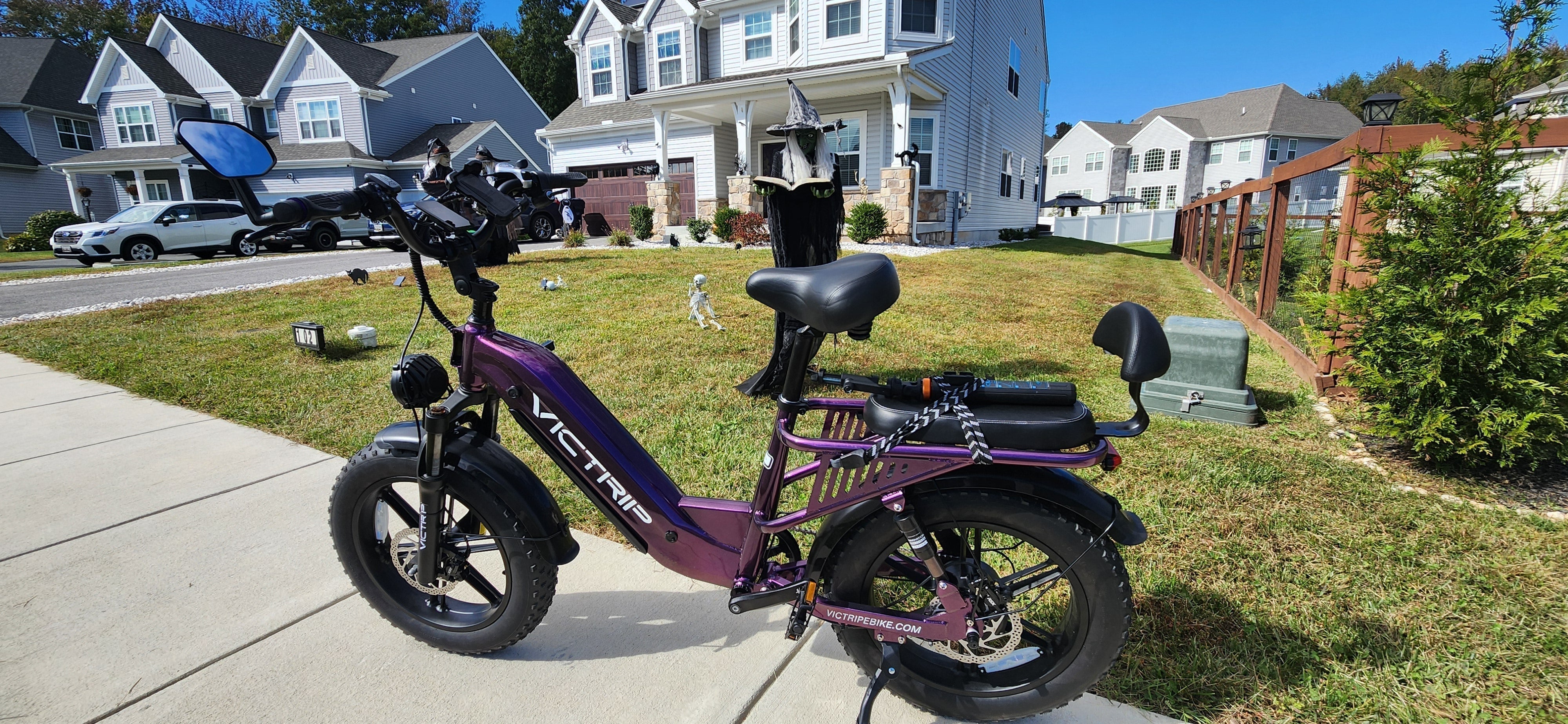
Cycling opens doors to fitness, freedom, and greener transport. But for many heavy riders, traditional bicycles present real hurdles: limited weight ratings, harsh rides, and shaky balance on uneven ground. That’s where Fat Tire Electric Bike Benefits for Heavy Riders become essential. These eBikes combine wide tires, strong frames, and robust motors to offer comfort, safety, and sustained performance.
In short, fat tire electric bikes aren’t simply “bigger tires.” They’re purpose-built machines that distribute weight better, tame rough surfaces, and use electric assist to overcome hills and long distances. For anyone looking to ride confidently and comfortably—whether commuting, exercising, or exploring trails—fat tire eBikes make cycling more accessible and enjoyable. Below we cover twelve concrete benefits, practical explanations, and buy-and-ride guidance so you can decide with confidence.
1. Exceptional Weight Capacity & Frame Strength
Reinforced aluminum & steel builds
Fat tire eBikes are commonly built with heavier-gauge frames—often thicker aluminum alloys or chromoly steel—designed to bear more stress. Manufacturers reinforce critical joints and use gussets where forks and tubes meet the headtube and bottom bracket. That reinforcement reduces flex when carrying heavier loads and improves long-term durability.
Long-term durability for heavy use
Because these eBikes are engineered for tougher terrain and bigger tires, components (wheels, spokes, hubs) are often overbuilt. Heavier-duty spokes (14–13 gauge), reinforced rims, and hubs with higher bearing capacity help prevent frequent failures. This means less maintenance and fewer surprises on longer trips.
Practical takeaways
-
Look for frame weight ratings and spoke counts in specs.
-
Prefer frames with welded gussets and thicker tubing.
-
Pay attention to recommended rider weight plus cargo; choose models rated above your anticipated total.
The VICTRIP R6 is engineered with a reinforced alloy frame and heavy-duty wheelset, specifically designed to support higher weight capacities without compromising durability. This makes it a standout option for riders who want both strength and long-term reliability.
2. Superior Stability & Balance on All Terrains
Wider contact surface for confidence
Fat tires (typically 3.7"–5") make more surface contact with the ground. That means improved lateral stability and a lower tendency to tuck or slip on soft, loose, or uneven surfaces. For heavier riders, increased contact translates to a steadier ride and fewer balance corrections.
Reduced risk of tipping
The set-up of wider tires increases the effective footprint of the bike. This lowers the center-of-mass sensitivity to sudden steering movements, reducing the likelihood of tipping when navigating obstacles or low-speed maneuvers.
Practical riding tips
-
Keep tire pressure within recommended ranges—slightly lower pressures improve traction but don’t go so low that you risk rim strikes.
-
Practice low-speed balance drills in a safe area; stability can be surprisingly different than narrower-tire bikes.
3. Enhanced Comfort with Wide Tires
Shock absorption on bumpy roads
Fat tires act like natural shock absorbers. The extra rubber and larger volume cushion impacts from potholes, roots, and rough pavement. That cushioning reduces transmitted vibration and can be especially valuable for heavier riders whose bodies experience greater force on impacts.
Reduced joint and back strain
Because the tires absorb more shock, riders typically feel less jarring in their wrists, shoulders, and lower back. That means longer rides with less fatigue and a gentler reintroduction to exercise for riders returning to cycling.
Comfort-enhancing accessories
-
Choose ergonomic saddles rated for heavier riders.
-
Consider suspension forks or seatpost suspension if you often ride rough paths.
-
Use a wide saddle and proper saddle tilt to minimize pressure points.

4. High-Torque Motors for Effortless Pedaling
Why torque matters for heavy riders
When a bike and rider are heavier, starting from a stop and climbing hills demands torque more than raw top speed. High-torque mid-drive or powerful hub motors deliver the low-end pulling force needed to accelerate smoothly without straining the rider.
Hill-climbing capabilities
Fat tire eBikes with higher torque settings handle steep grades more easily. With electric assist engaged, riders maintain cadence instead of grinding at low speeds—this retains muscle health and reduces joint stress.
Motor selection guidance
-
Prefer mid-drive motors for steep climbs and better gear utilization.
-
Check rated torque (Nm) and continuous power specifications; higher torque numbers mean more pulling power.
-
Ensure controllers and batteries can handle motor draws without overheating.
The VICTRIP T1 electric trike features a high-torque motor that provides effortless acceleration and smooth hill climbing, making it a smart choice for riders who prioritize stability alongside motor power. Its three-wheel design ensures heavy riders can climb and maneuver with added confidence.
TOP PICK

VVICTRIP® T1 Foldable Electric Tricycle
5. Long-Range Batteries to Support Extra Load
How weight affects battery drain
Adding mass increases rolling resistance and increases the energy required per mile. That’s why heavy riders should prioritize larger battery capacity—more watt-hours (Wh) equals a longer effective range even under heavier loads.
Benefits of high-capacity batteries
Quality lithium packs with 600–1,000 Wh capacity (or dual-battery/dual motor setups) can dramatically reduce range anxiety for heavier riders. Premium models like the VICTRIP N12 feature high-capacity batteries with advanced energy management, ensuring extended ride times even when supporting additional rider weight.
Smart battery habits
-
Charge regularly; avoid deep discharges.
-
Use eco or balanced assist modes for extended range on long trips.
-
Carry a backup charger if you're riding remote routes.
TOP PICK

VICTRIP®SURNAT N12 2000W Electric Bike
6. Safer Braking Systems for Heavy Loads
Hydraulic vs mechanical disc brakes
For heavy riders, stopping power is vital. Hydraulic disc brakes provide stronger, more consistent stopping force and better heat dissipation than most mechanical systems, which is crucial on long descents or heavy-load braking scenarios.
Heat resistance during long rides
Disc brakes experience fade if they overheat during repeated braking. Oversized rotors (180–203 mm), multi-piston calipers, and quality pads reduce fade, giving heavier riders reliable stopping performance.
Maintenance reminders
-
Check pad wear regularly; heavier riders may need replacement more often.
-
Consider stainless-steel or sintered pads for longevity.
-
Bleed hydraulic lines annually or when feel gets spongy.
7. Versatility Across Terrains
From urban streets to sand and snow
Fat tires excel on surfaces that defeat narrower tires: sand, snow, mud, and loose gravel. Their flotation and traction make routes accessible that would be difficult or dangerous on a standard bike.
Fat tires for adventure cycling
For riders who like to mix commuting and weekend exploration, a fat tire eBike handles singletrack light trails as well as rough beachfronts—extending where a rider can go without swapping equipment.
Setup adjustments for terrain
-
Lower tire pressures for sand and snow.
-
Add fenders for wet urban commutes.
-
Use puncture-resistant liners if you frequently ride debris-filled paths.
8. Reduced Pressure on Wheels & Tires
Distribution of rider weight
The larger tire volume spreads a rider’s weight over more rubber and air, lowering ground pressure and reducing hotspot wear. That often yields longer tire life and fewer flats in rough conditions.
Longer tire lifespan
Because the contact patch is larger and rolling forces are spread across more material, wear is slower—especially with quality fat tires designed for load-bearing.
Practical maintenance tips
-
True wheels periodically; heavy loads stress spokes.
-
Use tubeless set-ups with sealant to reduce flats.
-
Inspect rims for dents after heavy impacts.
9. Confidence Boost for Overweight Riders
Mental health benefits of cycling
Cycling is a low-impact cardiovascular activity that builds endurance while protecting joints. Fat tire eBikes lower entry barriers and help riders feel confident and safe—encouraging regular exercise and improving mental well-being.
Read More: Pedal Assist Electric Bike Health Benefits Backed by Science.
Building stamina without strain
Electric assist lets riders choose intensity. They can ride further and more often without overworking, progressively building strength and stamina while enjoying the ride.
Community and inclusion
Many riders report greater social inclusion when cycling suits their body and comfort needs. Fat tire eBikes reduce stigma by making cycling accessible, encouraging participation in group rides and outdoor activities.
10. Eco-Friendly Transportation for All Body Types
Replacing cars for short trips
For short commutes and errands, a fat tire eBike can substitute for car trips, cutting emissions and saving money on fuel and parking. For heavier riders, the bike’s stability and comfort make this shift realistic.
Sustainable commuting
Electric bikes are far more energy-efficient than cars per mile. Choosing an eBike for errands or short commuting trips reduces one’s carbon footprint while offering health benefits.
Cost-of-ownership perspective
Factor in maintenance, battery replacement, and charging costs—these usually remain far lower per mile than car ownership, especially when you ride frequently.
11. Accessibility & Inclusivity in Cycling
Breaking barriers for overweight riders
Design choices—stronger frames, adjustable components, and wider saddles—make fat tire eBikes more welcoming. This inclusivity expands who feels comfortable joining cycling communities.
Encouraging body positivity
By focusing on performance and comfort rather than aesthetics, the eBike market increasingly prioritizes riders’ needs. That shift promotes body-positive messaging and broader participation.
Design features to look for
-
Wide, supportive saddles and adjustable stems.
-
Step-through frame options for easier mounting/dismounting.
-
Accessible gear and brake controls suitable for limited mobility.
Both the VICTRIP R6 and VICTRIP T1 emphasize inclusivity. The R6 is ideal for those who prefer a classic two-wheel design with fat tires and extended range, while the T1 caters to riders who need extra balance support without sacrificing performance. Together, they showcase how modern fat tire eBikes open cycling to a broader audience.
TOP PICK

VICTRIP®R6 Off Road Ebike
12. Cost-Effective Fitness Investment
Savings on gym memberships
A reliable fat tire eBike becomes a fitness tool and transportation device in one. Over time, the bike can pay for itself compared to recurring gym fees and transportation costs.
Long-term health benefits
Regular low-impact cycling improves cardiovascular health, reduces diabetes risk, and supports weight management. For heavy riders, the lower joint strain and boost in confidence can accelerate adoption and long-term habit formation.
Smart buying tips
-
Balance initial cost with expected usage; frequent riders benefit more from higher-end components.
-
Check warranty terms on frames and batteries.
-
Factor in accessories: rack, lights, fenders, and storage.
Short Practical Buying Checklist
-
Frame rating (total weight capacity) above your expected total.
-
High-torque motor (mid-drive preferred for hills).
-
Battery capacity (Wh) sufficient for your range needs.
-
Hydraulic disc brakes with large rotors.
-
Quality wheels: high spoke count, reinforced rims.
-
Comfortable saddle and step-through options if needed.
-
Consider tubeless tires with sealant.
Conclusion: Why Fat Tire Electric Bikes Are the Ultimate Choice for Heavy Riders
Fat tire electric bikes address the core barriers heavy riders face: they add stability, durability, and comfort while keeping cycling accessible and enjoyable. With the right frame, motor, battery, and brakes, these bikes transform daily transportation and recreation for riders of all sizes. If you want to ride more, commute comfortably, or explore off-road terrain, a thoughtfully chosen fat tire eBike is a practical, healthful, and eco-friendly investment that pays dividends in confidence and freedom.
FAQs
Are fat tire electric bikes safe for very heavy riders?
Yes—when you choose a model rated for your combined rider and cargo weight. Look for reinforced frames, high-spoke-count wheels, and hydraulic disc brakes. It’s also wise to follow manufacturer weight limits.
How much does a fat tire eBike cost compared to a regular eBike?
Fat tire eBikes often cost more due to heavier frames, stronger wheels, and larger components. Expect a premium of several hundred to a few thousand dollars depending on motor and battery quality.
Do fat tires make pedaling harder?
Not necessarily. While rolling resistance can be higher, electric assist compensates for that. With the motor engaged, pedaling effort is typically comparable or easier than on a standard eBike.
What tire pressure should heavy riders use?
Follow the tire manufacturer’s recommendations, but many heavy riders find comfort and traction at pressures between 8–18 psi for fat tires—lower pressures for sand/snow, slightly higher for pavement.
How do I maximize battery range as a heavy rider?
Use eco assist modes, maintain steady cadence, avoid excessive acceleration, keep tires properly inflated, and minimize extra cargo weight. Consider a larger battery or dual-battery setup if you need long range.




Share:
Cruise Through the Holiday: Best eBikes for Labor Day Trips
Can Teenagers Ride Electric Bikes in 2025? Age Restrictions by State